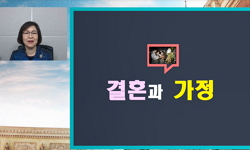본고는 교수요목기부터 2015 개정 교육과정기까지 교육과정의 흐름을 살피고, 초등학교 1-2학년 사회과 교과서 및 통합교과서의 ‘가족단원’ 삽화를 파악한 후, 가족 형태와 가족돌봄노동과...
http://chineseinput.net/에서 pinyin(병음)방식으로 중국어를 변환할 수 있습니다.
변환된 중국어를 복사하여 사용하시면 됩니다.
- 中文 을 입력하시려면 zhongwen을 입력하시고 space를누르시면됩니다.
- 北京 을 입력하시려면 beijing을 입력하시고 space를 누르시면 됩니다.

초등학교 교과서를 통해 본 가족담론의 변화: 1-2학년 사회과 교과서 및 통합교과서를 중심으로 = Changes in Family Discussion through Elementary School Textbooks: Focusing on Social Studies Textbooks for 1st and 2nd Graders and Integrated Textbooks
한글로보기https://www.riss.kr/link?id=A109175188
- 저자
- 발행기관
- 학술지명
- 권호사항
-
발행연도
2024
-
작성언어
English
-
주제어
Family discourse ; family type ; family role ; elementary school ; social studies subject ; 가족담론 ; 가족형태 ; 가족역할 ; 초등학교 ; 사회과교과
-
등재정보
KCI등재후보
-
자료형태
학술저널
-
수록면
5-40(36쪽)
- DOI식별코드
- 제공처
-
0
상세조회 -
0
다운로드
부가정보
국문 초록 (Abstract)
첫째, 가족 형태에 있어서 ‘표준가족’ 담론의 변화가 확인된다. 이는 정부가 지향하는 가족계획과 인구구조의 변화에 따라 그 양상이 나타났다. 5인 핵가족/불완전한 6인 확대가족 → 4인 핵가족/6인 확대가족 → 4인 핵가족/6인 확대가족/3인 핵가족 등의 형태로 변화되었다.
둘째, 가족 형태에 있어서 ‘다양한 가족’ 담론이 수용되고 확장되었다. 2009 개정 교과서에서는 가족 현실과 가족담론을 수용하면서 ‘표준’, ‘정상’에서 벗어난 현실의 다양한 가족 형태를 수록하였다. 2015 개정 교과서 ‘가족단원’ 삽화에서는 ‘다양한 가족’에 대한 확장된 담론의 내용이 삽화로 포함되었다.
셋째, 남녀성역할에 따른 기능주의적 가족담론에서 양성평등 담론을 수용한 삽화의 변화를 확인하였다. ‘생계 부양’, ‘가사노동’, ‘양육’을 축으로 조부, 조모, 부, 모, 언니/누나, 형/오빠 등 가족 구성원의 가족돌봄노동에서 이러한 담론 변화가 나타났다.
본고는 교수요목기부터 2015 개정 교육과정기까지 교육과정의 흐름을 살피고, 초등학교 1-2학년 사회과 교과서 및 통합교과서의 ‘가족단원’ 삽화를 파악한 후, 가족 형태와 가족돌봄노동과 관련한 담론의 변화를 검토하였다.
첫째, 가족 형태에 있어서 ‘표준가족’ 담론의 변화가 확인된다. 이는 정부가 지향하는 가족계획과 인구구조의 변화에 따라 그 양상이 나타났다. 5인 핵가족/불완전한 6인 확대가족 → 4인 핵가족/6인 확대가족 → 4인 핵가족/6인 확대가족/3인 핵가족 등의 형태로 변화되었다.
둘째, 가족 형태에 있어서 ‘다양한 가족’ 담론이 수용되고 확장되었다. 2009 개정 교과서에서는 가족 현실과 가족담론을 수용하면서 ‘표준’, ‘정상’에서 벗어난 현실의 다양한 가족 형태를 수록하였다. 2015 개정 교과서 ‘가족단원’ 삽화에서는 ‘다양한 가족’에 대한 확장된 담론의 내용이 삽화로 포함되었다.
셋째, 남녀성역할에 따른 기능주의적 가족담론에서 양성평등 담론을 수용한 삽화의 변화를 확인하였다. ‘생계 부양’, ‘가사노동’, ‘양육’을 축으로 조부, 조모, 부, 모, 언니/누나, 형/오빠 등 가족 구성원의 가족돌봄노동에서 이러한 담론 변화가 나타났다.
다국어 초록 (Multilingual Abstract)
First, there was a change in the ‘standard family’ discourse in terms of family type. This was in response to the family planning policy promoted by the government and changes in population structure. The family shown in textbooks changed from a nuclear family of 5/incomplete extended family of 6 to a nuclear family of 4/extended family of 6, and a nuclear family of 4/extended family of 6/nuclear family of 3.
Second, in recent textbooks, the discourse of ‘diverse families’ has been accepted and expanded in terms of family types. Starting from the textbooks of the 2009 revised curriculum, various forms of real families that deviate from the ‘standard’ or ‘normal’ were expressed in illustrations, reflecting actual reality and changed family discourse.
Third, with regard to gender roles, it was confirmed that the ‘early functionalist family discourse’ has recently changed into a ‘gender equality discourse’. This change can be found in the expression of illustrations related to the family care work of family members such as grandfather, grandmother, father, mother, older sister, older brother in ‘supporting a living’, ‘housework’, and ‘custodial care’.
We reviewed the contents of the family-related curriculum from the 1946 U.S. Military Government syllabus to the 2015 revised curriculum. By examining illustrations of family-related units for first and second graders of elementary school, we confirme...
We reviewed the contents of the family-related curriculum from the 1946 U.S. Military Government syllabus to the 2015 revised curriculum. By examining illustrations of family-related units for first and second graders of elementary school, we confirmed changes in the expressions of family types and family care labor shown in textbooks. As a result, the following conclusions were drawn.
First, there was a change in the ‘standard family’ discourse in terms of family type. This was in response to the family planning policy promoted by the government and changes in population structure. The family shown in textbooks changed from a nuclear family of 5/incomplete extended family of 6 to a nuclear family of 4/extended family of 6, and a nuclear family of 4/extended family of 6/nuclear family of 3.
Second, in recent textbooks, the discourse of ‘diverse families’ has been accepted and expanded in terms of family types. Starting from the textbooks of the 2009 revised curriculum, various forms of real families that deviate from the ‘standard’ or ‘normal’ were expressed in illustrations, reflecting actual reality and changed family discourse.
Third, with regard to gender roles, it was confirmed that the ‘early functionalist family discourse’ has recently changed into a ‘gender equality discourse’. This change can be found in the expression of illustrations related to the family care work of family members such as grandfather, grandmother, father, mother, older sister, older brother in ‘supporting a living’, ‘housework’, and ‘custodial care’.
동일학술지(권/호) 다른 논문
-
유의(儒醫) 석봉(石峰) 김병태(金抦泰) 가문의 대택(大宅) 경영
- 전남대학교 인문학연구원
- 김종수
- 2024
- KCI등재후보
-
玉川 趙德鄰의 親族 관련 祭文에 나타난 애도방식과 의미
- 전남대학교 인문학연구원
- 최은주
- 2024
- KCI등재후보
-
‘잃어버린’ 모성과 상실의 트라우마, 책임은 누구에게 있는가?
- 전남대학교 인문학연구원
- 김재민
- 2024
- KCI등재후보
-
퀴어생존의 생태계를 구축하는 실천으로서의 돌봄: 게이 남성을 중심으로
- 전남대학교 인문학연구원
- 김순남
- 2024
- KCI등재후보




 KCI
KCI






